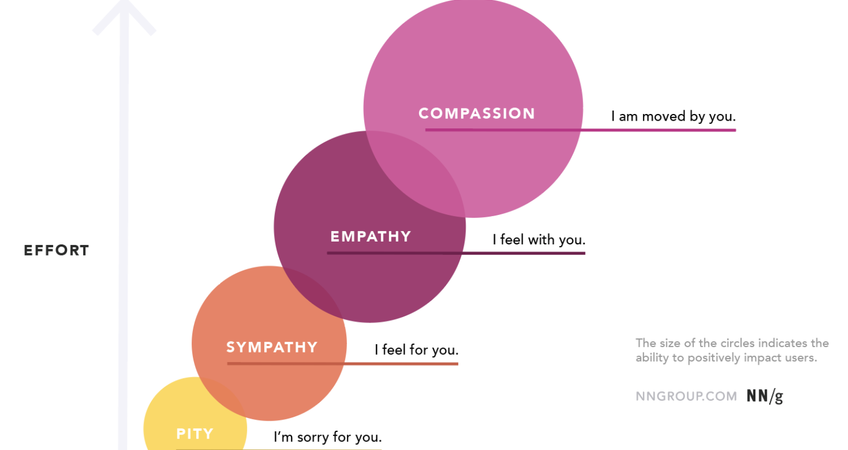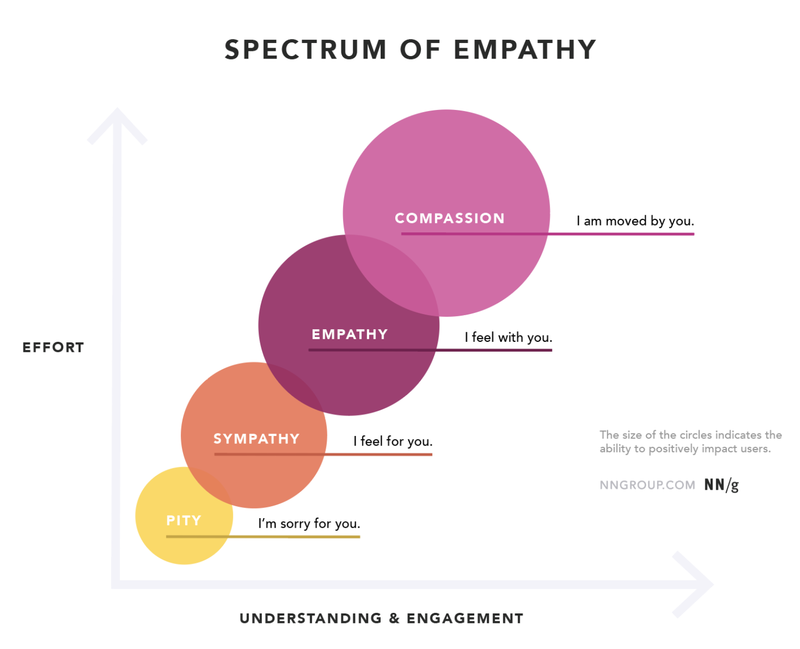
When creating/designing amazing online experiences, UX professionals must be empathetic to your target consumer, NOT sympathetic. Businesses now need a new type of "CEO": the Chief Empathy Officer!
Why are so many online experiences still classified as being poor? One reason comes from recent research from the NN Group, where they state the majority of UX professionals practice sympathy instead of empathy!
Defining Sympathy:
- Sympathy is the acknowledgement of suffering of others
- It’s a reaction in the form of pity of hardship of another person
- It does not involve a shared perspective or shared emotions
- The result is condescending overtones which translates into designs.
- Sympathy does not put UX professionals in the shoes of the consumer and feel their pain.
The result is condescending overtones which translates into designs.
Defining Empathy:
Empathy is the ability to fully understand, then share another person’s expressions, needs, and motivations.
Empathy enables UX professionals to understand not only the consumer's immediate frustrations, but also their hopes, fears, abilities, limitations, reasoning, and goals.
Empathy allows for a deeper understanding of the consumer and results in the creation of solutions/experiences that solves needs and removes removing unnecessary pain or friction.
The goal of creating amazing online experiences is not to be nice to consumers. It’s to empower them.
The size of the gap between pity (extreme sympathy) and compassion (extreme empathy) and how it translates to how a business architects online experiences is visually represented below.
The size of the circles represent the positive impacts that can be made to consumers.

How does your organisation become more empathetic?
Make contact and let's chat about how I can become your new “CEO” and change the business culture from pity to compassion.
This article was as tagged as Best Practice , eCommerce Conversion Rate Optimisation , UX Design